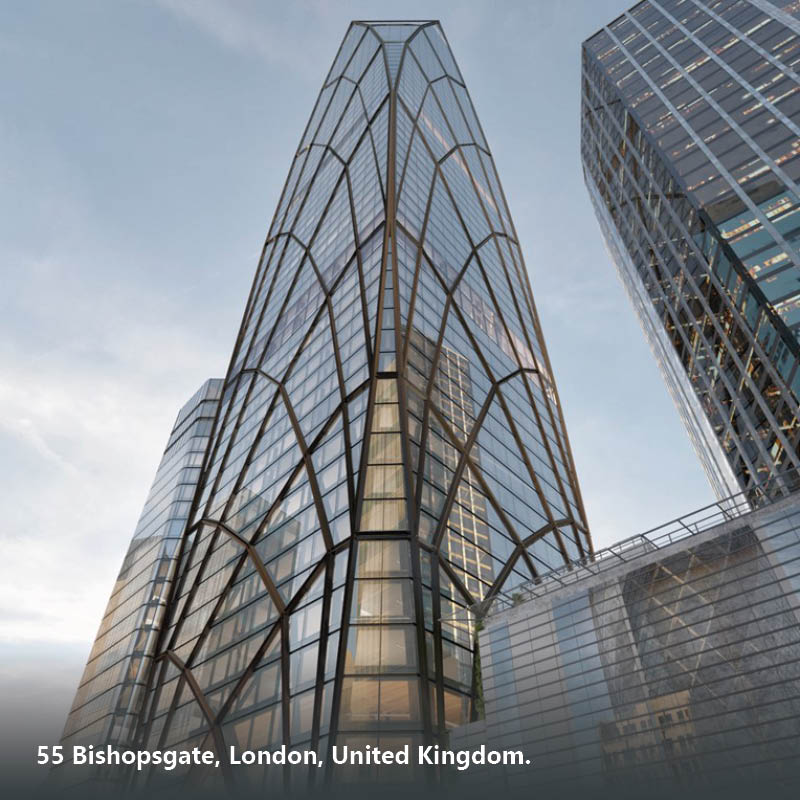- October 14, 2024
- 12:18 am
Since Robert Bird Group’s inception in 1982, the world has witnessed a remarkable evolution in the design and construction of tall towers. As cities grow and space becomes increasingly scarce, these towering structures have become iconic landmarks and critical elements of modern urban landscapes. To delve into this transformation, we spoke to three of our tall tower experts – David Seel, Chief Operating Officer, Buildings + Cities, Simon Cloherty, Operations Director (Europe), and Rodney Seely, Executive Director (AMEP) – about their unique experiences on some challenging international projects who provided the following insights.
Constructing tall towers presents critical engineering challenges, notably ensuring serviceability, where the building must offer a comfortable environment for occupants by expertly controlling movement and stiffness to maintain occupant comfort and safety amid external forces such as wind and seismic events. Engineers have leveraged advanced design and analytical tools to achieve significant progress in this regard. Simultaneously, optimising tall building geometries through wind tunnel testing and advanced wind modeling has enabled designers to craft shapes that efficiently dissipate wind loads. By reducing wind-induced sway, engineers have increased the stability of these structures, enhancing their performance and expanding the limits of achievable height.
“Really tall buildings are the Formula One of building design – everything gets pushed to the limits. You’re always at the edge of what can be achieved and trying to find new ways to achieve even higher heights.” – Simon Cloherty
Over the last few decades, we have witnessed considerable advancements in materials and construction techniques. This transition from communicating the design and construction process through sketchpads and hand drawings to a fully digital approach encompasses 3D and 4D modeling. Augmented reality visualisation now plays a pivotal role in enhancing our understanding of the construction process. These digital tools facilitate precise planning, streamline coordination, and improve communication among diverse stakeholders, ultimately resulting in more efficient construction timelines and superior outcomes.
In terms of materials, traditional reinforced concrete has been the backbone of tall tower construction, but its heavy reliance on cement-based concretes contributes significantly to CO2 emissions. As sustainability concerns grow, the industry has explored alternative materials such as cross-laminated timber (CLT) to reduce environmental impact. Furthermore, the adoption of prefabrication and modern construction methods has significantly increased efficiency. One example is One Leadenhall in London, where prefabricated systems were used, allowing incredibly quick floor cycle times and showcasing the potential of such approaches in tall building construction.
“We’ve got a real opportunity to focus carefully on our design technology to generate lean designs and really optimise the use of materials in our structures. Through research and topology optimisation, we tailor engineering forms to site-specific needs. Reusing existing building stock and materials is a key strategy, minimising the demand for new resources and supporting innovative, net-zero pathways within the supply chain.” – David Seel
In an era of heightened environmental awareness and guided by RBG’s sustainable engineering philosophies, our experts advocate for a holistic consideration of tall structures. This entails not only optimising their design but evaluating their carbon footprint / long-term operational impact, thereby fostering a more sustainable and harmonious coexistence between the urban environment and the ecosystems upon which it depends; there’s an essential requirement to question the fundamental necessity of tall buildings and rigorously justify their construction. In essence, these remarkable towers stand as a testament to the intricate balance we must strike between innovation, necessity, and sustainability in our ever-evolving cities.
“Ultimately, it’s a conversation about the building’s purpose within its social context. We must consider whether there’s a genuine need for super-tall or mega-tall structures in a given community. Exploring the potential for a self-sustaining vertical city within the building and achieving energy self-sufficiency are essential aspects, all central to managing operational carbon and the building’s overall life cycle.” – Rodney Seely
These perspectives emphasise the critical importance of sustainability in the construction and operation of tall towers in the modern world, providing a valuable reflection on the industry’s historical trajectory and its future direction. Through the mitigation of embodied carbon, the reduction of material consumption, and the adoption of cutting-edge technologies, tall towers can significantly reduce their environmental impact and play a key role in fostering a more sustainable and resilient future.

